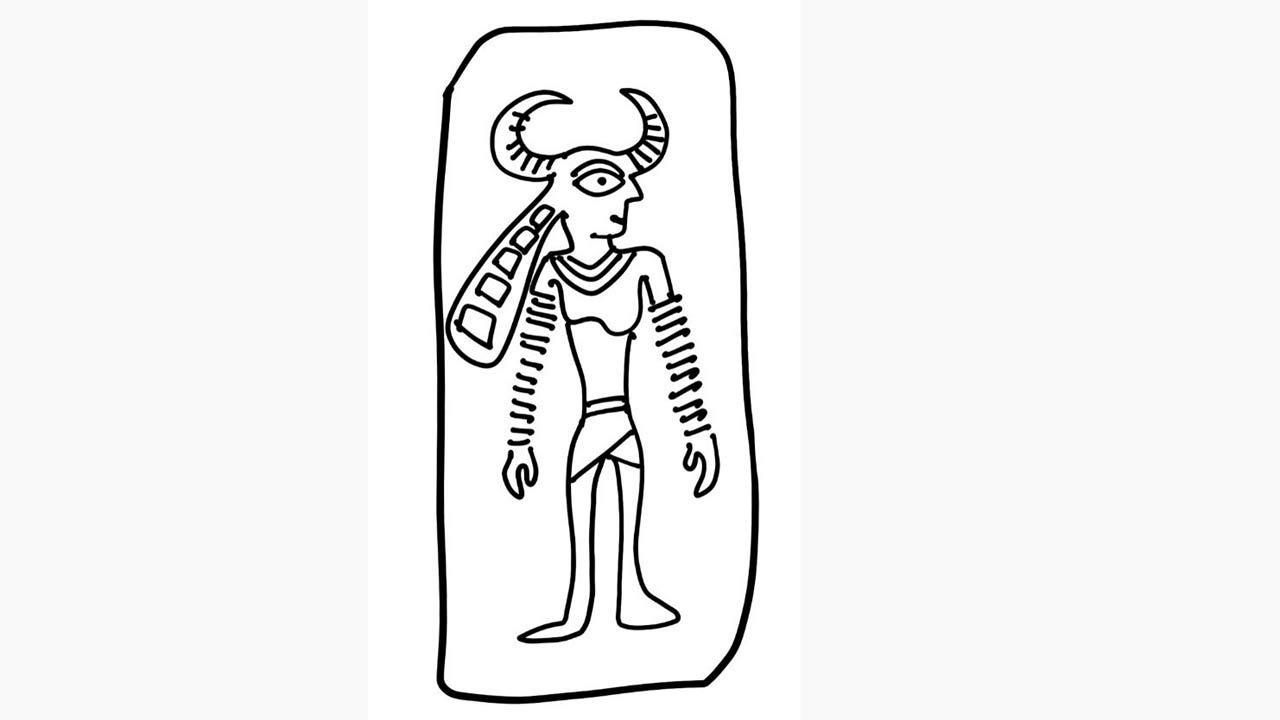These are symbols of femininity that are passed on from mother to daughter

Illustration/Devdutt Pattanaik
 If you travel to central India, the Maria tribe is famous for its bison headdresses. It’s quite a characteristic feature. The Maria tribe lives in the Maharashtra area and makes a striking image as they beat their drums. Strings of cowrie shells cover the face of the drummers.
If you travel to central India, the Maria tribe is famous for its bison headdresses. It’s quite a characteristic feature. The Maria tribe lives in the Maharashtra area and makes a striking image as they beat their drums. Strings of cowrie shells cover the face of the drummers.
ADVERTISEMENT
Meanwhile, in the Gujarat-Rajasthan area, the Banjara women wear camel bones as armlets, bracelets, and bangles, similar to shell bangles worn by women in Bengal. They wear the maang-tika on their head, and don colourful attire.
Far to the north in Tibet, women wear the Perak. This is a leather headdress which hangs to the back, covering the back of the neck that is covered with lapis lazuli turquoise and cowrie shells. If you go towards the Himalayan region of Pakistan, in the Kalash region, the Chitral tribal women also have a similar headdress. They refer to it as a Perak, mostly made of wool, it is also decorated with cowrie shells, and colourful buttons made of lapis lazuli and turquoise.
These are symbols of femininity that are passed on from mother to daughter.
These three objects, one from Central India, one from Gujarat-Rajasthan region and one from the Himalayan region, seem to have no connection until we start studying images from the Harappan period. In seals, we find important beings wearing a crown, having a bison or horned head, and having strange headgear with a back which flutters behind the neck. They also have bangles on either arm. There are beaded necklaces, much like the beads worn by tribal women as well as the Mangal Sutra, which is worn in the villages across India. Village women also wear bangles.
When one observes these practices, one cannot help but wonder if there is a connection between all these contemporary practices found in traditional societies and Harappan art.
Far away in Mehrgarh, there is a statue with a red line in the centre parting of the hair, which people assume could be sindoor. Cinnabar was brought into India from China via Afghanistan. In Pakistan, there is a Goddess associated with Sinbar, the Hinglaj Mata Temple. The famous “dancing girl” statue of Mohenjo-daro has bangles on her left arm and forearm. Reminds us of newly married Punjabi girls wearing chuda. Women were buried with the bangles. Bangles were unique to the Indus valley civilization. Made of shell, terracotta, and later metal, they were now made using glass and even plastic. But bangles remain integral to Indian traditional fashion.
How old is Indian fashion? It is extremely difficult to prove continuity in the realm of fashion history. But perhaps there was once a great civilisation in India 5,000 years ago, long before the Vedic people came, and the people there wore costumes which now are seen in different regions of India. Long ago, they were worn together: the horn, the bangles, the headdress. Then, these costumes went to different parts of India like pieces of a jigsaw puzzle separating themselves. United in the past, they now contribute to India’s diverse present.
The author writes and lectures on the relevance of mythology in modern times. Reach him at devdutt.pattanaik@mid-day.com
 Subscribe today by clicking the link and stay updated with the latest news!" Click here!
Subscribe today by clicking the link and stay updated with the latest news!" Click here!







